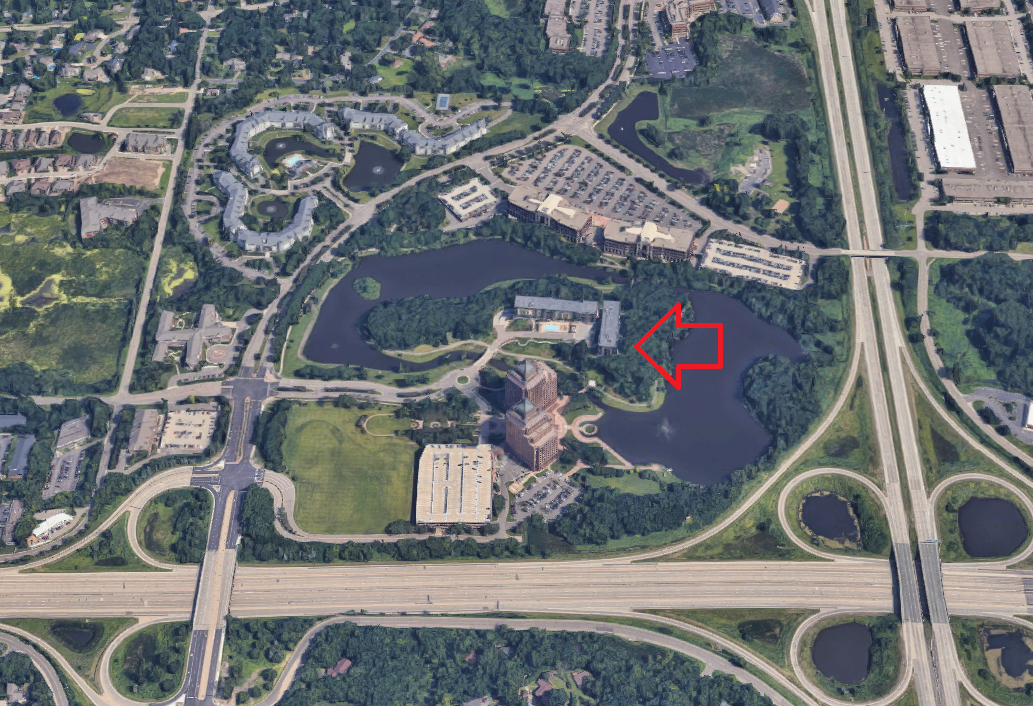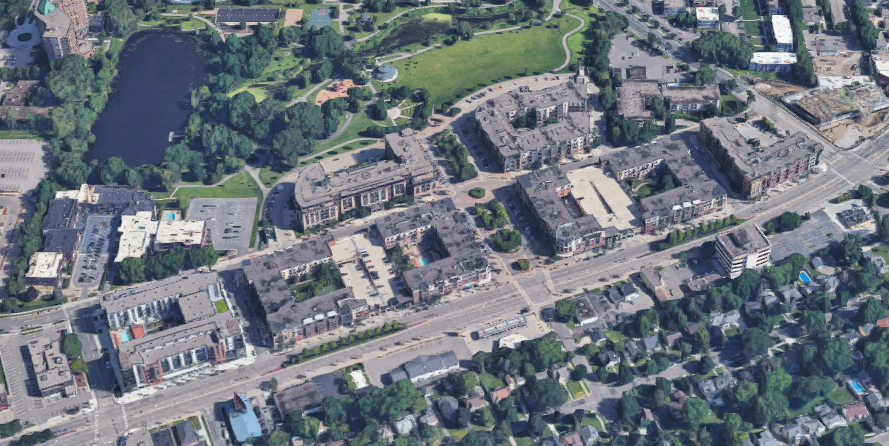The Greenest New Building is the One in the City
Technically, blue is my favorite color. But I like green. My eyes are green (legally, HAZ) and so I’ve got a lot of green clothes, hats, etc. In popular discourse, the color green is also linked to the environment and the idea of being sustainable. Wikipedia says that it has to do with its association with nature, which makes sense.
Sort of hard to tell what claims are made in good faith “these days” but one thing I hear a lot is that new buildings are not green. Bit of a strawman generalization for me to throw that out there but you’ve definitely also heard this, at public meetings and on Nextdoor and in ill-fated lawsuits.
There’s a house already on that lot, and three trees; tearing down a house and cutting down three trees can’t be green right? Literally, the lot is green: there’s grass right there, in the lawn. Also some bushes—though they’re not doing great? Still, the new building is bad.
Not really, though.
If you’re tearing down a house in the city to replace it with another house, that generally checks out—it would probably be better for the environment for you to figure out how to rehab the old house rather than landfilling the old one and building a new one. Likely, it’d be more expensive.
But if you’re adding more units to that land, and you’re in the city, that’s not the case. Housing that doesn’t get built in Minneapolis gets built somewhere. Where does it get built? Sometimes, it gets built in the nearby town of St. Paul. But more often, it gets built out in the suburbs or exurbs. There’s a spectrum of better and worse suburbs, but it’s pretty clearly worse for the environment to put 300 people in Coon Rapids compared to, say, Whittier when you consider how those new residents are going to get around, not to mention things like habitat loss.
When considering the environment, many have clung to a wacky 1970s association with the literal color green (a pesticide and fertilizer soaked lawn, half the time) at the expense of understanding how whole, overall systems work.
Technically not great
A 200 unit apartment building that gets built on a parking lot in Northeast Minneapolis is in an already developed area with hundreds of destinations in walking distance and has a street network that’s easy to serve with transit.
A 200 unit apartment building that gets built in the armpit of a freeway interchange in a second ring suburb often has zero destinations within walking distance, and is basically impossible to serve with transit in a cost-effective way. They also tend to fill in wetlands and have two acres of surface parking.
A lot of the people in the new Northeast Minneapolis building still have a car, but not all of them, and those that do will drive shorter distances and make fewer trips. They have a choice in their transportation options. The people in the second ring suburban apartment building have one choice: driving a car everywhere.
So like here’s a recent example:
This isn’t even all that faraway from the city. That’s “Hello Apartments” in Golden Valley off Highways 55 and 100. It was built a couple years ago and has 172 apartment units and a Walk Score of 30. Everyone in this building is going to own a car. There’s a Red Lobster down the street, but that’s about it, and Red Lobster isn’t as good as you remember from when you were a kid. There are a few bus stops nearby, and those buses go to one place (downtown Minneapolis) and only run during rush hour. That’s the only transit service that’s going to make sense here for the foreseeable future.
Here’s another new suburban apartment building:
That’s in Shakopee! Near Canterbury. 88 units, Walk Score of 13. Everyone in this building is going to own a car and use it for all their trips. I can’t even imagine how faraway a lot of them will work. Maple Grove? Woodbury? This is technically like 10 acres, but much of the space is taken up by a water retention pond and a surface parking lot.
Here’s a funny one:
It has a moat! That’s “Island Residences,” a newer 173 unit apartment building in Minnetonka, in the northwest armpit of the I-394/494 interchange. Unless you work at Carlson Companies, you’re driving everywhere.
This works for smaller scale multifamily development, too:
This is a cluster of fourplexes in Brooklyn Park, near the Target campus up there. The lots are about 20,000 square feet each, so it’s the same unit density as four single family houses in South Minneapolis, but with party walls. Walk Score of 40—you could technically walk to a few things over here, but, would you?
I would guess not that often.
Like I said earlier, there’s a spectrum of suburbs. Building more housing at Excelsior and Grand in St. Louis Park is probably not a bad idea.
God’s Country, baby
You’ve got a street grid and enough things close to enough to other things that you may in fact walk to the grocery store or the coffee shop or a few restaurants or the damn Comcast store. The Walk Score is 80. You’re close enough to downtown Minneapolis and Southdale. You’re probably still going to have a car, but you’re going to use it way less and for shorter trips than the guy behind the Minnetonka Moat.
But you know, ideally, the greenest new building in Minnesota is going to be in Minneapolis, at like Central and 2nd in Northeast, where you’ve got just about everything within walking distance already, and frequent transit service into downtown.
—
We know that transportation is, at this point, the largest single source of carbon emissions in the United States. Lawns, while literally the color green, are kind of bad in this case—requiring housing and destinations to be further and further apart requires more people to burn more gas to get between those things, and out in the further burbs, leaves them with a single option: driving.
Eventually, wider adoption of electric cars may start to change some of this, but it’s still not that clear what the overall environmental impact of manufacturing several billion giant car batteries is, among other things. Electric cars still take up the same amount of freeway space, and in any case you’re tearing up wetlands in Plymouth for your new building. Walking in Uptown remains eco-friendly.
In the badly-broken San Francisco Bay Area, decades of refusing to allow enough housing to be built has led to absolutely bonkers commutes for some—there are a bunch of people living two hours away from their jobs. These folks are spending hours in a car, burning gas, so aging hippies in Berkeley stick it to developers? Nice. We’re not anywhere near that yet, but we can avoid this by building more housing in Minneapolis, today.












